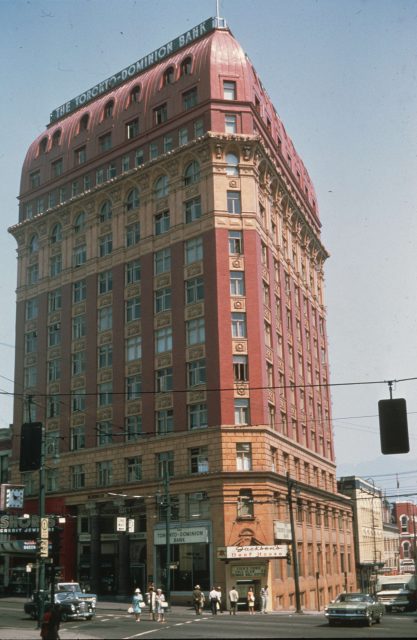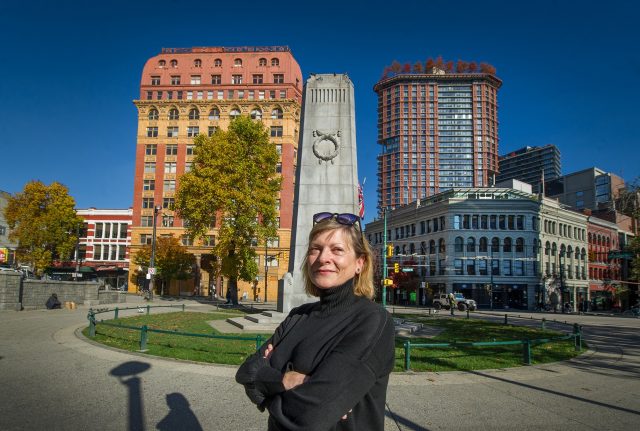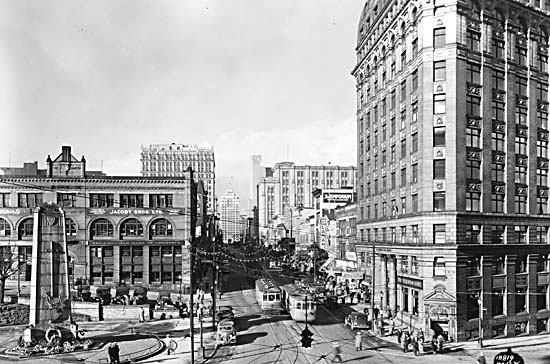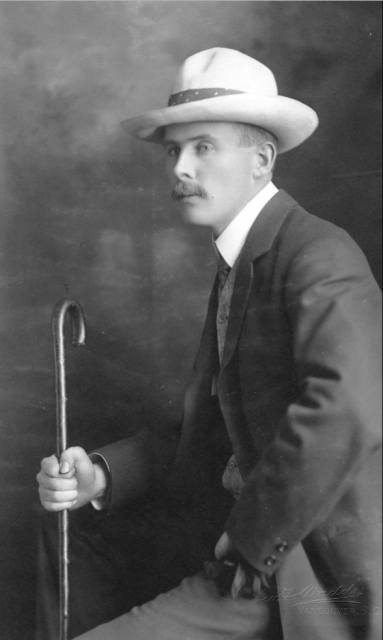For Part Six in my sad, but ongoing series of our missing buildings, I’ve selected a former city hall, a railway station and a court house and then taken a look at what we’ve done with their old sites.
Even if you don’t love the architecture—and I do happen to be a fan of anything that’s gothic and grim and wears a turret—you’ve got to admit that they’re interesting buildings, and would have made amazing additions to our current landscape.
The Second CPR Station
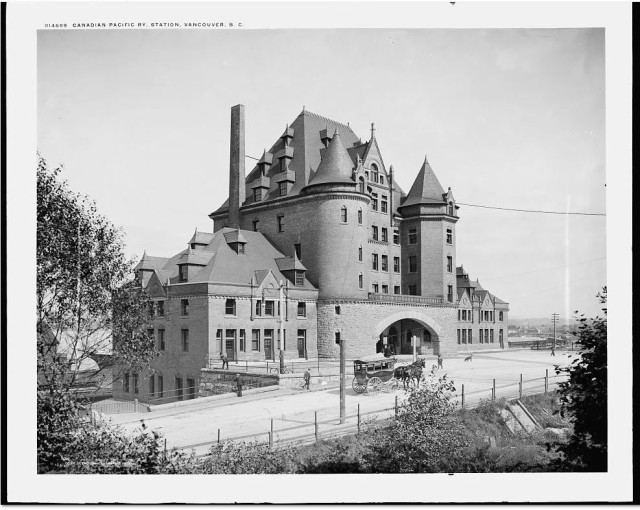
Seems we’ve always had a penchant for new versus old. This interesting old building lasted not much more than a decade. Built in 1899, in a Canadian Chateau style design, it was quickly replaced by the third CPR station (now Waterfront Station or the Sea Bus terminal). The skyscraper and plaza that went up in the ‘70s and a parking garage occupy the old station’s former site and was for many years, the headquarters for the Vancouver Sun and Province. The building was part of Project 200, another “urban renewal”* scheme that would have wiped out most of Gastown, and fortunately never got off the ground.
The Old Courthouse
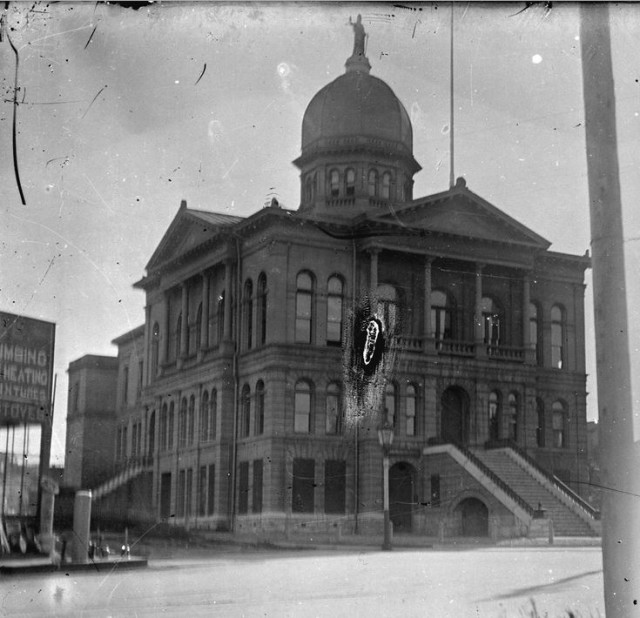
The first courthouse was built in 1888 at the corner of Hastings and Cambie, facing Hastings, and where Victory Square is today. Even with an addition in 1894, the building was quickly deemed too small for the growing city. Instead of repurposing the imposing building for some other use, it was gone by World War 1, replaced for a time by a large tent used by military recruiters to sign up soldiers to fight in the war.
Market Hall
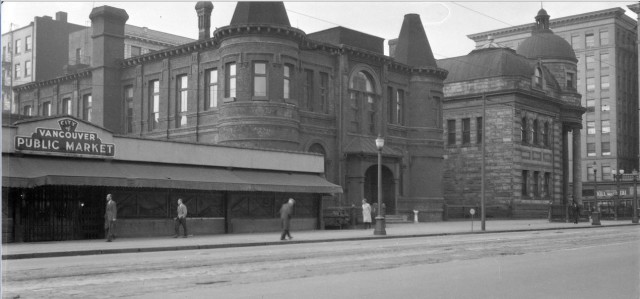
Before it became City Hall in 1898, Market Hall had a public market on the ground floor and a theatre on the second floor. The building was finished in 1890 and sat on Westminster Avenue (Main Street) near the Carnegie Centre on East Hastings. City Hall moved down the street into the Holden Block in 1929. Market Hall came down in 1958.
For more stories like this one, check out Vancouver Exposed: Searching for the City’s Hidden History
© All rights reserved. Unless otherwise indicated, all blog content copyright Eve Lazarus.



